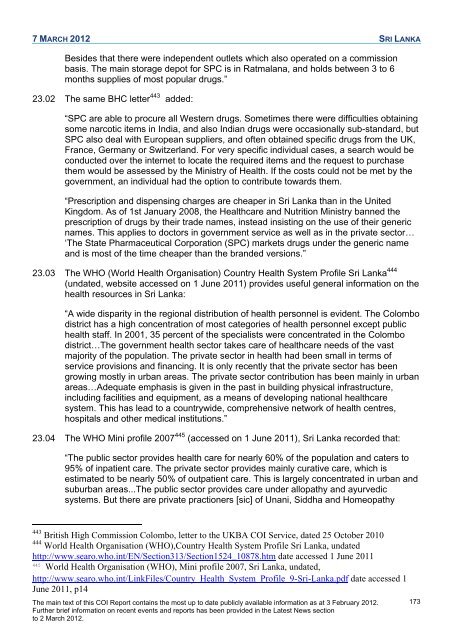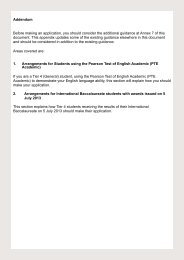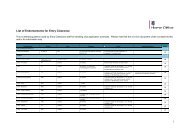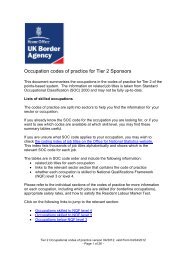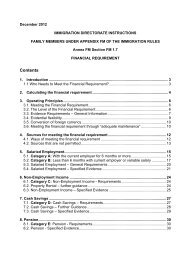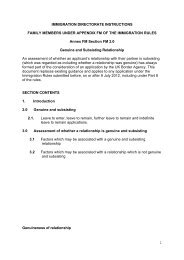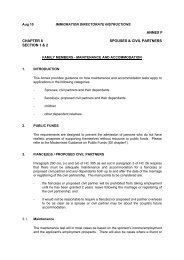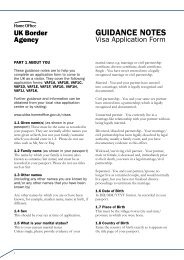COI Report March 2012 - UK Border Agency - Home Office
COI Report March 2012 - UK Border Agency - Home Office
COI Report March 2012 - UK Border Agency - Home Office
You also want an ePaper? Increase the reach of your titles
YUMPU automatically turns print PDFs into web optimized ePapers that Google loves.
7 MARCH <strong>2012</strong> SRI LANKA<br />
Besides that there were independent outlets which also operated on a commission<br />
basis. The main storage depot for SPC is in Ratmalana, and holds between 3 to 6<br />
months supplies of most popular drugs.‖<br />
23.02 The same BHC letter 443 added:<br />
―SPC are able to procure all Western drugs. Sometimes there were difficulties obtaining<br />
some narcotic items in India, and also Indian drugs were occasionally sub-standard, but<br />
SPC also deal with European suppliers, and often obtained specific drugs from the <strong>UK</strong>,<br />
France, Germany or Switzerland. For very specific individual cases, a search would be<br />
conducted over the internet to locate the required items and the request to purchase<br />
them would be assessed by the Ministry of Health. If the costs could not be met by the<br />
government, an individual had the option to contribute towards them.<br />
―Prescription and dispensing charges are cheaper in Sri Lanka than in the United<br />
Kingdom. As of 1st January 2008, the Healthcare and Nutrition Ministry banned the<br />
prescription of drugs by their trade names, instead insisting on the use of their generic<br />
names. This applies to doctors in government service as well as in the private sector…<br />
‗The State Pharmaceutical Corporation (SPC) markets drugs under the generic name<br />
and is most of the time cheaper than the branded versions.‖<br />
23.03 The WHO (World Health Organisation) Country Health System Profile Sri Lanka 444<br />
(undated, website accessed on 1 June 2011) provides useful general information on the<br />
health resources in Sri Lanka:<br />
―A wide disparity in the regional distribution of health personnel is evident. The Colombo<br />
district has a high concentration of most categories of health personnel except public<br />
health staff. In 2001, 35 percent of the specialists were concentrated in the Colombo<br />
district…The government health sector takes care of healthcare needs of the vast<br />
majority of the population. The private sector in health had been small in terms of<br />
service provisions and financing. It is only recently that the private sector has been<br />
growing mostly in urban areas. The private sector contribution has been mainly in urban<br />
areas…Adequate emphasis is given in the past in building physical infrastructure,<br />
including facilities and equipment, as a means of developing national healthcare<br />
system. This has lead to a countrywide, comprehensive network of health centres,<br />
hospitals and other medical institutions.‖<br />
23.04 The WHO Mini profile 2007 445 (accessed on 1 June 2011), Sri Lanka recorded that:<br />
―The public sector provides health care for nearly 60% of the population and caters to<br />
95% of inpatient care. The private sector provides mainly curative care, which is<br />
estimated to be nearly 50% of outpatient care. This is largely concentrated in urban and<br />
suburban areas...The public sector provides care under allopathy and ayurvedic<br />
systems. But there are private practioners [sic] of Unani, Siddha and <strong>Home</strong>opathy<br />
443 British High Commission Colombo, letter to the <strong>UK</strong>BA <strong>COI</strong> Service, dated 25 October 2010<br />
444 World Health Organisation (WHO),Country Health System Profile Sri Lanka, undated<br />
http://www.searo.who.int/EN/Section313/Section1524_10878.htm date accessed 1 June 2011<br />
445 World Health Organisation (WHO), Mini profile 2007, Sri Lanka, undated,<br />
http://www.searo.who.int/LinkFiles/Country_Health_System_Profile_9-Sri-Lanka.pdf date accessed 1<br />
June 2011, p14<br />
The main text of this <strong>COI</strong> <strong>Report</strong> contains the most up to date publicly available information as at 3 February <strong>2012</strong>.<br />
Further brief information on recent events and reports has been provided in the Latest News section<br />
to 2 <strong>March</strong> <strong>2012</strong>.<br />
173


